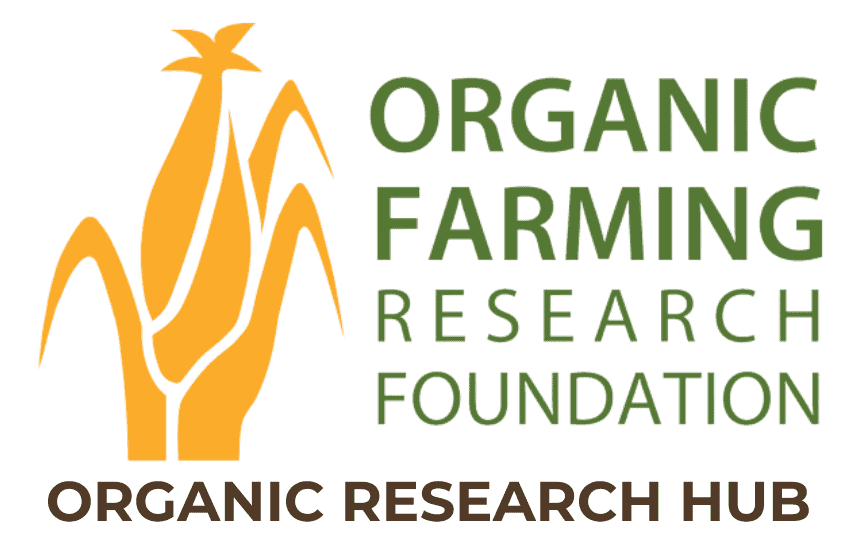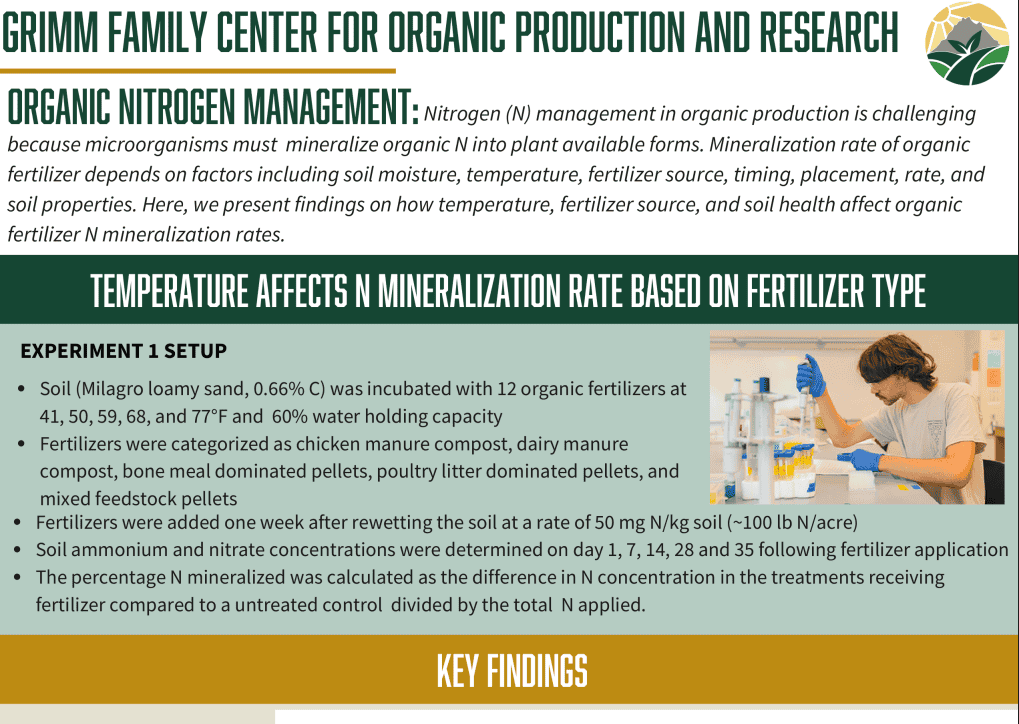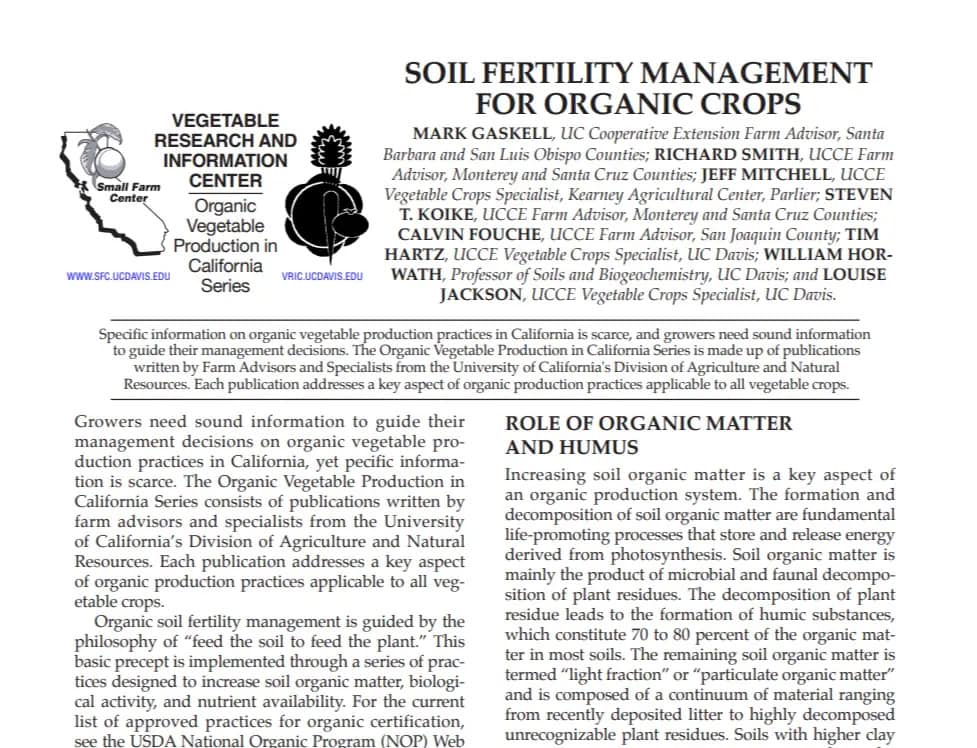Soil Organic Carbon and Total Nitrogen Under Long-Term Conventional vs. Organic Management
Project Director: Klaus Lorenz, Ohio State University
Project Overview
The Farming Systems Trial (FST) at Pennsylvania’s Rodale Institute is the longest-running comparative ecological study of conventional and organic corn and soybean cropping systems in North America. Long-term ecological studies are imperative for understanding the interannual variability and gradual changes in both soil composition and crop yields under different agricultural management practices.
Soil organic carbon (SOC) and total nitrogen (TN) are two important components of soil fertility and are often focal areas for organic agriculture. Building SOC can enhance soil health by supporting diverse soil microbial communities and improving both aggregate stability and water retention. TN is important for sustaining crop yields, as nitrogen is often a limiting nutrient in agricultural systems.
This study, which utilizes data from the 34th consecutive year of Rodale’s Farming Systems Trial, analyzes SOC and TN for conventional and organic grain cropping systems.

Farmer Takeaways
- After 34 years, there is a significant difference in SOC and TN concentrations and stocks between conventional and organic grain cropping systems.
- Periodic applications of composted manure may enhance topsoil SOC accumulation in organic grain systems.
- Organic grain cropping systems, both with and without manure integration, may enhance TN accumulation when compared to conventional grain cropping systems.
Project Objectives and Approach
Farming Systems Trial Setup
The Farming Systems Trial is comprised of three management systems, including: (1) conventional (CONV), (2) organic-legume cover crop (OA-LEG), and (3) organic-manure (OA-MNR). The CONV system relies on synthetic fertilizers and herbicides for annual grain crop (i.e. corn, wheat, oat) production and weed control. The OA-LEG system does not utilize synthetics; rather, the system’s N fertility comes from mid-length rotations of leguminous cover crops (including soybeans, hairy vetch, and clovers) between annual grain croppings. Similarly, the ORG-MNR system (which represents an organic dairy or beef operation) features rotations of annual feed grain crops and perennial forage crops, with N fertility provided by both leguminous cover crops and periodic applications of composted manure.
Soil Sampling and Timeline
Soil samples are collected and analyzed annually from plots in all three management systems. Sampling for the Farming Systems Trial began in 1981, and soil composition data from the 34th consecutive sampling year (2015) was utilized for this report.

Key Findings
Manure-derived C may be retained at larger proportions in the soil than C from cover crop residues, resulting in the long-term accumulation of topsoil SOC
- When the trial began in 1981, SOC concentrations at 0-10cm depth were not different between the three management systems. However, in 2015 (the focal year for this study), SOC concentrations at both 0-10 and 10-20cm depths were significantly higher in the OA-MNR system than in the CONV system. No significant differences were observed at any depth between the CONV and OA-LEG systems.
- In 2015, the only significant difference between both OA systems was higher SOC concentrations at 0-10cm depth in OA-MNR compared to OA-LEG plots.
N additions through leguminous cover crop residue or composted manure may be more effective compared to mineral N fertilizers in enhancing TN over time
- In 2015, TN concentrations at 0-10, 10-20, and 20-30cm depths were higher in both OA-LEG and OA-MNR systems than in the CONV system.
Reduced tillage (RT) in organic cropping systems may contribute to higher SOC and TN concentrations between 0-20cm, but may reduce crop yields slightly
- Reduced tillage was associated with higher SOC concentrations at all depths in OA-LEG compared to CONV plots.
- Reduced tillage was associated with higher SOC concentrations at the 0-10 and 10-20cm depths in OA-MNR compared to CONV plots.
- Reduced tillage was associated with higher TN concentrations at the 0-10 and 10-20cm depths in OA-LEG compared to CONV plots.
- A reduction in crop yield (corn/soybean) was observed after reduced tillage was implemented in the OA-LEG plots.

Resources
Lorenz, K., Omondi, E., Lal, R., Das, S., & Smith, A. (2025). Soil organic carbon and total nitrogen after 34 years under conventional and organic management practices at the Rodale Institute Farming Systems Trial. Soil Science Society of America Journal, 89(1), e14165. https://doi.org/10.1002/saj2.70000
Read MoreLocation
PennsylvaniaCollaborators
Emmanuel Omondi, Tennessee State University
Rattan Lal, Ohio State University
Saurav Das, Rodale Institute
Andrew Smith, Rodale Institute
Region
Northeast/Mid-Atlantic
Topic
Soil Health, Crop Nutrient Management, Climate Solutions, Cropping Systems
Category
Grain and Field Crops
Year Published
2025



